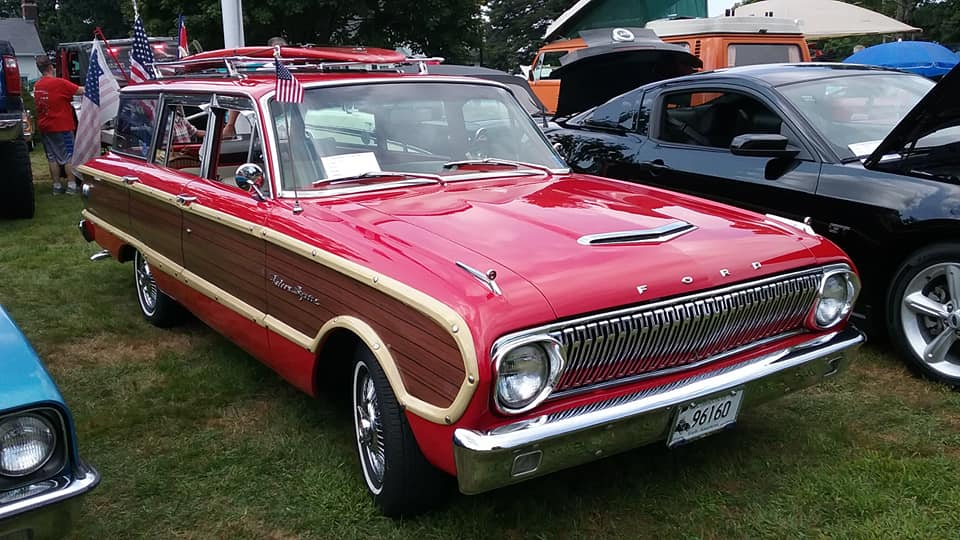Car: Ford Falcon Squire Station Wagon
Year: 1962
What makes it special: Penned under Ford’s then general manager Robert S. McNamara, the Falcon was developed with parts sourced from the company’s existing bin in order to keep costs as low as possible. FoMoCo also focused on reducing ownership costs. They also developed several body styles in order to cover as many niches and customer requirements as possible. The lineup included two- and 4-door sedans, three- and five-door wagons, and two-door coupe and convertible models.
What made it famous: The first-generation Falcon Squire arrived in 1962, two years after the Falcon’s initial launch. Heavily based on the Falcon sedan, the Squire Wagon had two large headlamps incorporated into a chrome grille that stretched from one corner to the other. The rear end was also similar with round taillights. The wagon featured a larger glasshouse, a tailgate, and a luggage rack on the roof. Another feature was the faux wood trim on the sides and the lower area of the tailgate. The side trim covered both the front and rear fenders, as well as the doors, giving the wagon a 1940s appearance. To emphasize on its woody look, the faux wood trim had lighter colors on its edges. By the time the Squire was launched in 1962, the Falcon had received a larger, 2.8-liter straight-six engine rated at 101 horsepower. Two transmissions were offered. A 3-speed manual with column shifter was standard, while a 2-speed Ford-O-Matic automatic was optional.
Why I would want one: I am a huge fan of the Ford Falcon, particularly the 1960-1968 models. Coupe, sedan, wagon…I’ll take ’em all!
Fun fact: For 1962, the Falcon Squire was priced from $2,603, a $556 premium over the standard four-door sedan. These woody-like wagons are obviously worth more nowadays. Prices usually vary between $15,000 to $30,000 for well-maintained examples, but rare models are known to have traded owners for close to $40,000.

